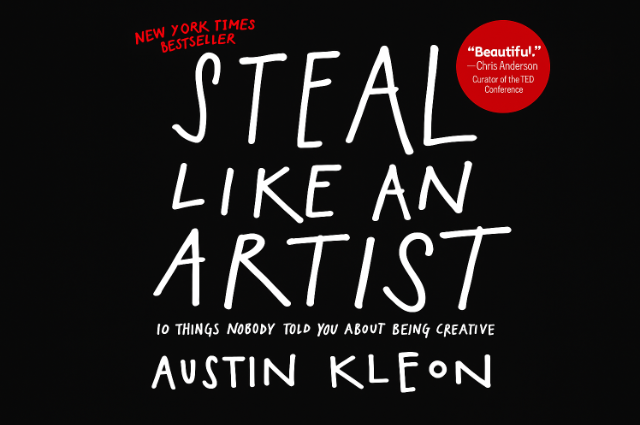
Steal Like an Artist is an interesting book by Austin Kleon. The book revolves around the question of borrowing ideas, creativity, originality, and innovating through mixing ideas. From the title, people may think the book talks about stealing in an immoral way, but after reading the book, you will find profound wisdom. In this article, I will explore my personal reading experience. It is not a book review but rather my learning through the book.
Philosophy of the Book
The author very beautifully describes the book as his conversation with his past self. The book emotionally touches your heart as you find someone guiding your younger self. The author talks about ideas as if they are borrowed bags of information. He provides many thoughtful quotes from artists discussing how everything has already been said, and it should be said by you again, because people need to hear it again. It is an attempt to help people escape the guilt and pressure of being original. Artists put a lot of pressure on themselves and sabotage their work because they take inspiration from someone else's work. But in this book, the author presents a new perspective. He shows creativity as a remix: taking ideas and molding them by mixing in your creativity. This gets you out of the waiting period, but you should start by imitating and then evolving. Imitation doesn't mean simply copying; it should resonate with your imagination.
Key Points From the Book
Steal Like an Artist delves deeper. It doesn't say stealing means to work like a thief or to snatch credit from a hardworking artist. Instead, it means to take inspiration, redefine, and recreate what already exists. Stealing like artists means to read what stirs our hearts, to admire what speaks to our souls, and to feel art that makes us alive. Then, collect bits of them to create our mosaic.
Kleon urges us to start where we are. Don't wait for the perfect time. The way to become is the art itself. Start imperfectly, and perfection will meet you on the way. Listen to your voice and create what you feel like connecting with. Satisfy your hunger; people will join the feast slowly. Write what you would have loved as a child. Your creative calling is your compass to follow the path. Use your hands along with digital devices. This dual environment pushes you more towards creativity. The author advises that side projects are important too—something you can do without the pressure of productivity. Explore them as play and self-expression.
The author connects the dots between creating and sharing. Especially in the digital age, sharing your work has become very easy. Create a post, blog, video, or audio, and share your work with the world. Do good work and let sharing be a natural process. Don't chase fame, but let your work do the talking. The digital age has made the world a small town. You can share your work with a huge audience. Art is an extension of being a good human. Be disciplined, take care of your health, and maintain routines. Chase consistency. Give space to emptiness in your work. Yes, you read it right. To know what to avoid to have clarity is crucial.
Relevance in the Modern World
In the age of social media, everybody has an opportunity to create and share their work. In today's world, the book shows high relevance. Its principles can also be applied in the field of education and learning. We can borrow ideas, reshape them, and frame them in ways that excite us. It also advises against drowning in various resources. His wisdom can be an inspiration for innovation and entrepreneurship. His philosophy is based on ethical practices. It is a way of life, reminding us of our uniqueness as well as advising us to know what we have borrowed from the world, such as values, habits, and culture.
Criticism and Reflection
The book has its limitations. The book is celebrated for its simplicity, but at the same time, critics commented that the book is oversimplified. They say the book doesn't discuss practical actions. Another critic has given his opinion that the word "steal" in the title could be misunderstood. The reader has the responsibility to understand the depth of the word. The book also doesn't talk about the audience who has limited resources. Based on this, creativity could only reach particular people.
Despite the criticism, the book has so much to learn from. One of the most beautiful things about the book is the little doodles, quotes, photos, and unique presentation.
At first glance, the book may feel like a little pocketbook. But beyond its simplicity, the book has creativity, philosophy, wise ideas, insights, and amazing quotes. The best thing about the book is that it inspires everyone to explore their creative side. Don't wait for perfection or approval. Just start as you like. In the modern world, where there is a lot of pressure to create, taking inspiration from others is also a way to begin. He inspires us not to be afraid of influence. Let other artists' work speak to you, and during that conversation, notice your voice. Listen to that voice expand, transform, and recreate it. Do add your tune and pitch, but don't forget to delete the background noise. This formula is not only for art but for every field of life.
